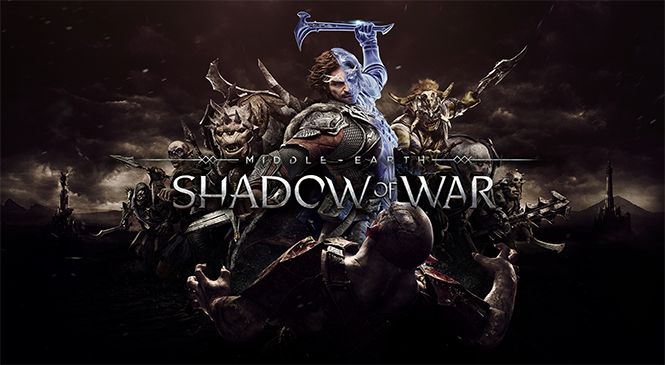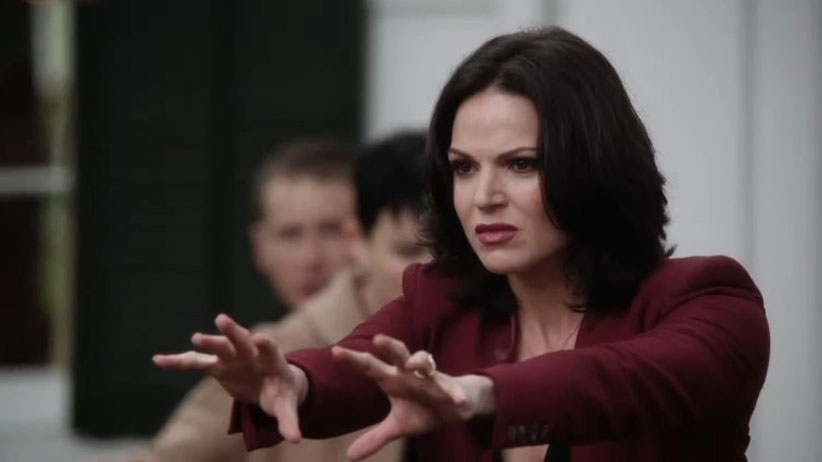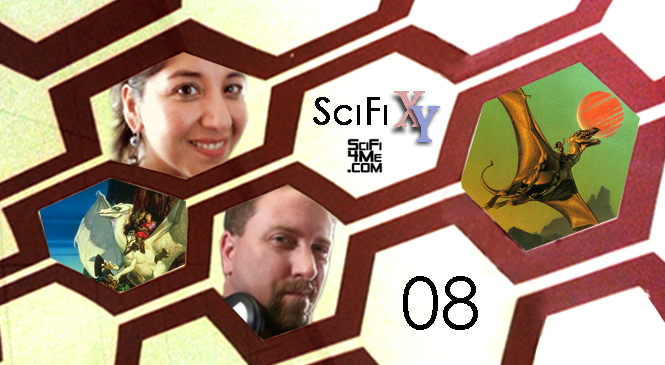Middle-Earth: Shadow of Controversy
Caution: Shadow of War is a brutally graphic game and contains imagery that may not be suitable for all audiences.
Warner Bros. Studio’s upcoming release from Monolith, Middle-Earth: Shadow of War should be one of the most anticipated games of the year. Their previous title, Middle-Earth: Shadow of Mordor, was a rising star. While the title was mostly just another “open world combat sim” that came out in a time that was flooded with “open world” titles such as Mad Max and Metal Gear Solid V, the one thing that made Shadow of Mordor stand out was that it implemented an AI behavior engine that they called the “Nemesis System”.
The Nemesis System was a set of AI rules that dictated how the game would progress around the player. The enemies would remember the player’s actions. Then it would use that information to craft personal stories through an army the player is constantly in conflict with. Special units will rise through the enemy army’s ranks. And then, depending on how the player interacts with those special units, they get stronger and more tuned to the player’s play style.
Now, cashing in on the game’s success, Warner Bros. is releasing a sequel. Bigger, better, and expanding on their well-received Nemesis System. Not only do the units become customized, but whole fortresses and enemy themes do as well. The theory of the sequel is to push the system to its limits. The studio wants to open the options and experiences for players to explore and discover new content. However, it seems that in the ever-quickening pace for entertainment media to chase customer dollars, the studio does seem to have bumped into controversy.
Loot Box Gambling Machine
Let’s talk first about loot boxes. Game studios are constantly trying to figure out how to monetize the games they make. Games are expensive pieces of artwork. On average, they take people hundreds of hours toiling away for several years to create the most complicated forms of artistic expression. Getting a return on that investment is not always the easiest feat. It’s no wonder that many studios are now looking to the trendy loot box system to gain profit after a game’s initial launch, especially after successful implementation of loot boxes in games like Overwatch and Destiny.
Related Review ~ OVERWATCH; Are You With Us?
Related: RPG Developer Cubicle 7 Rolls Nat 20 in Tolkien Studies
Loot boxes have been around in games for quite a few years now. Some games handle their loot box systems better than others. The system in Shadow of War on the surface doesn’t look like the best implementation. Pre-release, it’s hard to tell since it’s not out yet and we can’t really see its effects of paid content vs played content play out. But what we do know is this:
One item of note about loot boxes is that they are inherently a gamble. You pay real money for an undisclosed probability of randomly unlocking worthwhile in-game items. Most of the better implementations of loot boxes include a secondary marketplace where players can outright purchase wanted items with in-game currency generated by opening boxes as a sort of bad luck protection. No such system seems to be in place in Shadow of War. May the Random Number Generator be forever in your favor.
In Shadow of War loot boxes are split into three tiers. The bottom tier is available for in-game currency for the least amount of reward. Whether all the possible loot is obtainable at any substantial probability in these trash-bin boxes is yet to be revealed. The other two-tier boxes are reserved for premium real-world money only.
So, Monolith discuses loot boxes in a developer update. It will be interesting to see how the system affects the game play. Linked below is both Monolith’s developer update video and a Jimquisition video discussing the key points of their loot boxes.
Jimquistion, a general voice of opposition to monetization systems, is less than convinced about Shadow of War’s system. (As always, caution strong language and imagery).
One thing Monolith doesn’t seem to mention about the loot boxes, though it looks obvious, is the fact that everything in the boxes is consumable and temporary. In general, with loot box systems, unlocks tend to be skins and visual updates that last the lifetime of the game. The player pays money for content and while the game is still operational, the player can enjoy the content they spent real world money for.
In Shadow of War you get orcs, items, and power ups. Real money orcs can probably be killed, items can be broken down into crafting, and power-ups are consumed on use. There doesn’t seem to be any lasting investment for your dollars well spent. On top of that, there’s a PVP mode where you pit your bases against other players.
So, does that player vs player interaction include your loot box orcs? How do loot box epic and legendary orcs match up to general play orcs? If you wanted to do PVP are you forced to purchase loot boxes to even have a chance against other players that have already purchased large quantities of boxes? Think of games like Magic the Gathering where players that purchase the best cards have a much greater chance of winning games vs a player that has purchased the minimal required base play cards.
The question about loot boxes is this: Do the loot boxes make Shadow of War pay to win at the cost of cheapening the game’s standard available content? Does your purchase give any lasting amount of enjoyment is the duration of your premium orc only last until that orc becomes deathly allergic to sword points? And in PVP, are those durations shortened even further as other players kill off your premium orcs? If players spend more money than others, does that create a gap where more costly and plentiful loot box orcs dominate those players that didn’t spend as much or any at all?
Moving on:
Sexy Shelob, Coming to a Women’s Halloween Store Near You!
In combination with the loot box controversy there’s the questionable choice about changing one of Tolkien’s most mysterious and horrifying characters, Shelob. What was a giant spider is now a slim raven haired pale skinned woman in a revealing black side-slit dress. So instead of working with “an evil thing in spider form” as Shelob is described according to Tolkien in the Lord of the Rings, we end up playing with yet another mysterious sexualized black-haired Gothic witch lady. See Morrigan (Dragon Age series), Yennefer of Vengerberg (the Witcher series), Bayonetta (Bayonetta series), and countless others for examples. It’s a Hollywood stereotype that powerful spell casting women are generally portrayed as lithe dark-haired bombshells in scantily clad Goth style dresses.
Although the description of Shelob from Tolkien is quite vague, as Marykate Jasper writing for the Mary Sue aptly points out, there’s nothing in the description that brings up the mental image of the character that Monolith has pulled from thin air.
“But still she was there, who was there before Sauron, and before the first stone of Barad-dûr; and she served none but herself, drinking the blood of Elves and Men, bloated and grown fat with endless brooding on her feasts, weaving webs of shadow; for all living things were her food, and her vomit darkness”
–Tolkien, J. R. R. The Lord of the Rings. being the third part of The Lord of the Rings. London: Allen and Unwin, 1966. Description of Shelob
It just seems odd that they would go this route, especially since in the trailer they already prove that they have the giant spider model ready to go. The 3D art is there, it just needed a voice actress and boom, done! But they went the extra step to make it as bland and tone deaf as possible.
Personally, I feel like this move was a money grab. Game studios and tech companies are notorious for enlisting bad marketing practices, such as booth babes, as way to get quick attention to their products. This is just another instance in a long list of adding sexualized female characters randomly to a game for an assumed increase in quick short-term revenue, which ultimately cheapens the overall game experience as a result by diminishing creativity.
This choice, to change the giant spider motif, seems to fit into a misguided notion that most of fantasy fans, let alone Tolkien fans, are men who need female characters to be attractive because they aren’t interesting enough otherwise. I don’t know if this call was Warner Bros.’ production marketing teams or the game studio’s own nearsightedness … but it feels like a missed opportunity to do something no other game in history has done, ally with a giant evil spider.
Per usual Jim Sterling of the Jimquisition sums the whole controversy up neatly and concisely. (caution, strong language and imagery).
Moving on:
Shadow of War Promises to have Redeeming Qualities, too
Other than these two stumbles, the game itself looks good. The preview trailers look great, the shear depth of the proposed content looks fantastic. On the face of it, it looks the type of sequel fans of the first game and fans of the Lord of the Rings would really want to sink their teeth into.
Beyond the controversy, however, the game shows great promise. Something that surprised me came from this year’s E3 footage was how much personality they are giving to the orcs, a major step forward from the cardboard cut-outs of the previous game, where the interactions between the player and the orcs became a little repetitive by the late game: Your character had a random selection of about three to four dialogue lines. In response, the orcs had a select series of matching phrases, that sometimes were rather hilarious. Over the course of the game, the limited responses started becoming more and more predictable.
Beyond their introductory voice lines, the orcs themselves behaved pretty much the same as whatever enemy type they were. For example, archers were archers, shield guys were shield guys, etc. They didn’t change at all when they were your ally instead of your enemy. The nemesis engine impacted their effectiveness in combat but as far as distinct personalities, it wasn’t within the system’s original scope. Shadow of War seems to add distinct personalities to the system, and so far, it looks fantastic.
Enter Shadow of War’s Bruz the Chopper. He’s an orc with charm and charisma that’s off the charts. Chances are that he’s a story tutorial placement (which is only my guess) put there only to teach you how to dominate/mind control orcs. Even still, he’s smarmy and charming… in that brutal murderous way only orcs can be.
And speaking of orc personalities, apparently comedian Kumail Nanjiani is portraying a special orc of his own. It looks like it will be filled with his style of comedic speech mannerisms and general comedic personality.
Shadow of War brings the promise of bigger fights, harder bosses, and crazy creatures. It also promises some overall great player driven game play. The game isn’t without some missteps, unfortunately, but it will be hard to tell how those missteps will impact the game overall until it finally releases.
What are your thoughts on the upcoming Middle-Earth: Shadow of War? Let us know in the comments below.
![]()





